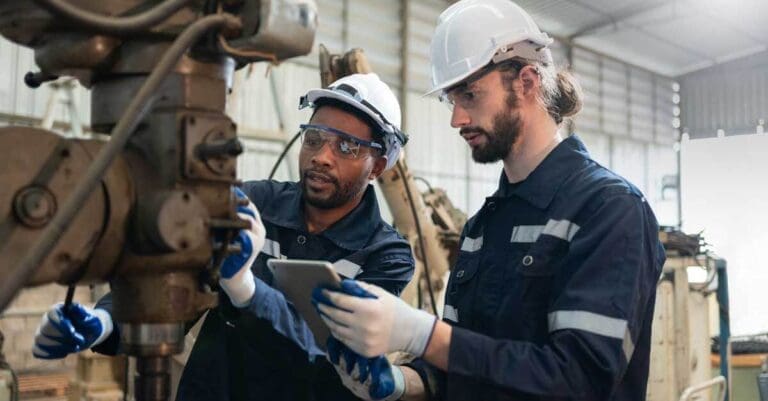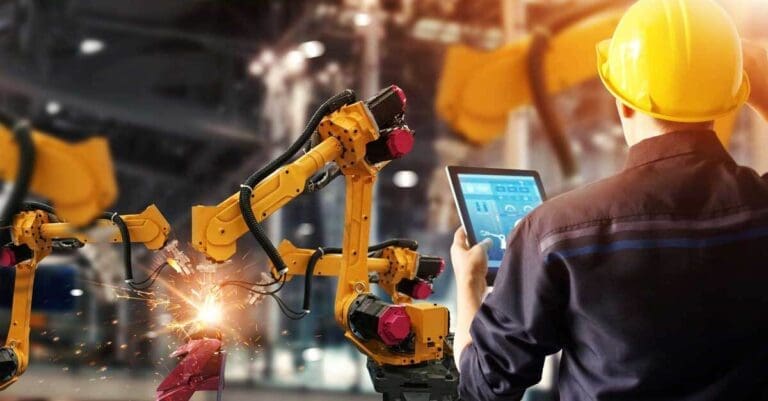
Downtime is one of the biggest sources of lost productivity and revenue in the supply chain – if your goods aren’t moving, they aren’t generating revenue.
By leveraging AI-powered solutions for predictive maintenance, your organization can reduce the frequency of equipment failures while dramatically improving productivity and reliability.
Things to know about AI for predictive maintenance:
- Common Supply Chain Challenges
- Why Should Your Business Use AI for Predictive Maintenance?
- 4 Ways to Optimize Supply Chain Management with AI for Predictive Maintenance
Common Supply Chain Challenges
With the rapid evolution of technology, the rapid pace of business, fluctuations in consumer preferences, decreased delivery time expectations, and political and economic instability, companies today face an ever-increasing volume of demand and supply variability.
Fluctuations in demand and unpredictable variations in supply can lead to imbalanced inventory levels, stockouts, or excess inventory. Managing these variations effectively requires accurate demand forecasting, agile production planning, and robust inventory management systems.
Global supply chains have also become more intricate, as organizations face the challenges that come with navigating complex networks of suppliers, distributors, and logistics partners across different countries. This complexity is amplified by additional risks, including geopolitical uncertainties, regulatory compliance, and cultural differences.
All of these supply chain challenges can significantly impact the efficiency, cost, and reliability of the overall process.
Why Should Your Business Use AI for Predictive Maintenance?
Organizations can overcome common supply chain struggles by leveraging the power of artificial intelligence to transform their supply chain and enhance efficiency, accuracy, and decision-making capabilities in the process.
When organizations use AI to predict equipment failure and maintenance needs based on data from sensors and other sources, they can proactively address maintenance issues before they become major problems. This reduces downtime and lost revenue and improves operational efficiency.
To learn more about optimizing your supply chain with AI, see our other articles in the series:
- AI for Supply Chain Optimization: Streamline Logistics
- AI for Supply Chain Optimization: Enhance Visibility
- AI for Supply Chain Optimization: Improve Demand Forecasting
4 Ways to Optimize Supply Chain Management with AI for Predictive Maintenance
Predictive analytics
Predictive analytics uses data, modeling, and machine learning to analyze current and historical data to make predictions about future outcomes.
By using AI algorithms to analyze data patterns and trends, organizations can better predict when maintenance is needed and identify potential issues before they occur. This empowers companies to shift from reactive to proactive maintenance, significantly reducing downtime and lost revenue in the process.
Machine learning
Organizations that train machine learning algorithms on historical maintenance data can develop models that adapt to the unique characteristics of their assets. These models can then predict when maintenance is needed based on factors including environmental conditions and performance indicators.
As new data is collected, the algorithms can adjust and improve their predictions.
By leveraging machine learning for predictive maintenance, companies can optimize their maintenance schedules, allocate their resources more efficiently, and ultimately reduce the number of disruptions in their supply chain.
Condition monitoring
AI can analyze sensor data from equipment to monitor its condition in real time. By utilizing sensors, IoT devices, and data collection systems, companies can gather valuable insights into the current health of their assets.
As a result, organizations can effectively and quickly identify any deviations from normal operations conditions or signs of potential equipment failures. This allows maintenance teams to detect problems early and take corrective action before they become more serious.
By swiftly identifying and addressing these problems with their assets, organizations can minimize equipment failures, reduce downtime, and optimize supply chain operations.
Fault detection and diagnosis
By leveraging AI to analyze sensor data, organizations can develop algorithms or models that quickly and automatically detect faults and diagnose the root cause of the problem.
This real-time fault detection allows organizations to swiftly identify and resolve issues, minimize disruptions, and optimize supply chain operations. It also helps maintenance teams identify the best course of action to repair the equipment.
Furthermore, the insights gained from this fault detection and diagnosis can be used to identify reoccurring problems and improve maintenance processes, asset design, and overall reliability moving forward.
It’s worth noting that while AI can bring significant benefits to supplier management, human expertise, and judgment are still crucial. AI should be viewed as a tool to augment human decision-making and enhance efficiency rather than replace human involvement entirely.
How AIM Consulting Can Help You Harness the Power of AI
AIM Consulting’s expertise in machine learning and predictive and prescriptive analytics has helped many organizations transform their supply chain management by improving efficiency, reducing costs, and enhancing customer satisfaction.
By using AI to predict equipment failures and maintenance needs, we can help your organization reduce downtime, reduce lost revenue, and improve supply chain reliability and operational efficiency.
Need Help Leveraging AI for Predictive Maintenance?
We’ll partner with you to harness the power of AI technologies and help your organization gain a competitive edge to stay ahead of the curve in today’s rapidly changing business environment.




